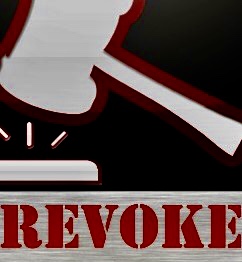
The Estate of Jean Maureen Dahle, deceased 2021 BCSC718 discussed the law relating to the removal of an executor, both under s 158 WESA, the common law and S. 31 Trustee Act.
The court was asked by two co executors to remove the other.
The court declined to remove either but appointed a third corporate trustee as a third co executor.
THE LAW
Section 158(3) of the WESA builds on the common law jurisprudence and provides statutory authority for removal of an executor of an estate (referred to as a “personal representative” in the WESA) in circumstances where the Court considers that the executor should not continue in office. The relevant part of s. 158(3) provides:
(3) Subject to the terms of a will, if any, and to subsection (3.1), the court, by order, may remove or pass over a person otherwise entitled to be or to become a personal representative if the court considers that the personal representative or person entitled to become the personal representative should not continue in office or be granted probate or administration, including, without limitation, if the personal representative or person entitled to become the personal representative, as the case may be,
…
(f) is
(i) unable to make the decisions necessary to discharge the office of personal representative,
(ii) not responsive, or
(iii) otherwise unwilling or unable to or unreasonably refuses to carry out the duties of a personal representative,
to an extent that the conduct of the personal representative hampers the efficient administration of the estate, or
…
[ Section 158(4) of the WESA provides that an order to remove an individual as an executor does not remove that person as a trustee of the estate.
Section 31 of the Trustee Act provides the statutory authority for the Court to remove an individual as a trustee, including as a trustee of an estate:
31 If it is expedient to appoint a new trustee and it is found inexpedient, difficult or impracticable to do so without the assistance of the court, it is lawful for the court to make an order appointing a new trustee or trustees, whether there is an existing trustee or not at the time of making the order, and either in substitution for or in addition to any existing trustees.
[A testator’s discretion to choose their executors and trustees should be given deference and not interfered with lightly: DeCotiis v. DeCotiis, 2008 BCSC 1206 at paras. 11–12. Ms. Dahle did not provide either Tim or Martin with sole decision-making power with respect to the estate or the Nickey Trust, and thus, they must exercise their duties jointly as co-executors and co-trustees and they are expected to act unanimously: Clock Holdings Ltd. v. Braich Estate, 2008 BCSC 1697 at para. 16.
While not determinative, animosity among co-executors may be a relevant factor in determining whether it is reasonable for them to be expected to carry out their duties effectively and efficiently: Nieweler Estate (Re), 2019 BCSC 401 at para. 29 [Nieweler]. To this I would add that it is relevant to consider whether the animosity is such that the duties could not be carried out efficiently and effectively, even with the assistance of a third party.
Unreasonable delay and failure to act to distribute an estate may be grounds for removal. In Dirnberger Estate, 2016 BCSC 439, Justice Kelleher referred to the Court of Appeal’s decision in Conroy v. Stokes, [1952] 4 D.L.R. 124 (B.C.C.A.) [Conroy] when describing the categories of conduct that can warrant removal of an executor:
There are four categories of conduct on an executor’s part that will warrant removal:
1. endangerment of the trust property;
2. want of honesty;
3. want of proper capacity to execute the duties; and
4. want of reasonable fidelity.
In Nieweler, Justice Myers applied the categories from Conroy concurrently with the application of the factors listed in s. 158 of the WESA. At para. 31, Justice Myers emphasized the importance of the welfare of the beneficiaries as the key factor in the exercise of the Court’s discretion to remove an executor:
[ The main guide in exercising the Court’s discretion to remove trustees is the welfare of the beneficiaries: Letterstedt at 387. It is not the interests of a particular beneficiary that are to be considered, but rather the benefit of the beneficiaries collectively: Conroy v. Stokes, at 128; Re Winter Estate, at para. 22.
It is important to note that perfection is not expected of an executor and not all acts of misconduct will lead to removal. Justice Thompson summarized this principle concisely in Estate of Forbes McTavish Campbell, 2015 BCSC 774 [Forbes McTavish]:
In Levi-Bandel v. McKeen, 2011 BCSC 247, Mr. Justice Butler removed a co-executrix. At paras. 15-16, he referred to the authorities supporting the inherent power of the court to remove a trustee. The test for removal of a trustee is the welfare of the beneficiaries of the trust estate: Letterstedt v. Broers (1884), 9 App. Cas. 371 (P.C.); Conroy v. Stokes, [1952] B.C.J. No. 111 (C.A.). Not every act of misconduct should result in removal. The question is whether the acts or omissions endanger the trust property or show a want of honesty or proper capacity to execute the duties or reasonable fidelity: Letterstedt, at 386.
[Emphasis added.]
Section 159 of the WESA provides the Court with the statutory authority to appoint an executor in circumstances where the Court has discharged or removed an executor. However, the WESA, unlike s. 31 of the Trustee Act, does not explicitly provide the Court with statutory authority to appoint an additional executor where an order for removal is not made. Nonetheless, the parties are in agreement, and I also accept, that this Court’s inherent jurisdiction provides me with the authority and discretion to appoint an additional executor in circumstances where no removal order is made so long as such an order is in the best interests of the welfare of the estate’s beneficiaries.




